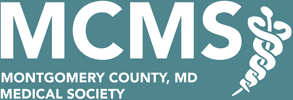
Telehealth: Insights and Implementation Resources
Telehealth Use Skyrockets 53%
A whitepaper, “FH Healthcare Indicators and FH Medical Price Index 2019: An Annual View of Place of Service Trends and Medical Pricing,” by Fair Health, a New York based nonprofit which specializes in data collection and research related to insurance claims in the US, reported claims data for “alternative settings of care”. The study found that claims for telehealth skyrocketed 53% from 2016-17, the most recent data year. The growth outpaces urgent care centers (14%), retail clinics (7%), and ambulatory surgical centers (6%).
The growth in telehealth service claims and payments has corresponded to growing patient demand and opens a path of opportunity for medical practices in Montgomery County and across the state of Maryland. Changes in the market have been well-cataloged by this Special Report published in The New England Journal of Medicine.
Maryland Specific Resources
Telehealth regulation varies greatly by state, and in rare cases, by county or municipality. The Maryland Health Care Commission won a series of grants beginning in late 2014 and running through to 2019 to support the adoption of telehealth services. Their work includes the cultivation of on-demand webinars, tools, guides and more. Some of MCMS’s most often referred to MHCC telehealth materials include:
- Telehealth Adoption – Office-Based Physicians
- Telehealth Professional Liability Insurance Flyer
- Telehealth Readiness Assessment (TRA) Tool
- Telehealth Reimbursement Flyer
Many more resources are available on MHCC’s telehealth resource website. They also have a designated point person for telehealth adoption who might be very helpful to you: Christine Karayinopulos – by phone 410-764-3444 or email at christine.karayinopulos@maryland.gov.
Resources from the AMA – No Membership Required
The American Medical Association (AMA) provides their Digital Health Implementation Playbook free of charge online, regardless of membership status. It offers key steps, best practices and resources to accelerate the adoption and scale of digital health solutions. The step-by-step guide to implementing remote patient monitoring will support patient compliance efforts, and the real practice case studies may be of vital importance as you fine tune your implementation plans.
The AMA also offers a CME module, a total of 2 AMA PRA Category 1 Credit™, on Health Information Technology, including telehealth, at no cost. Learn more on the AMA’s Ed Hub.
Federal Resources: HealthIT.gov
The Office of the National Coordinator for Health Information Technology (ONC) operates HealthIT.gov, with resources available for patients and health care organizations. Their web page on telemedicine and telehealth offers the following resources, which may be of particular use to practices during the process of implementing telehealth in their practice:
- The Federal Telehealth Compendium contains telehealth activities and resources available across the federal arena.
- Designing The Consumer-Centered Telehealth & eVisit Experience: Considerations for the Future of Consumer Healthcare
- Health IT Playbook: Telehealth, which cross references helpful AMA materials.
Other Organizations and Initiatives
- American Telemedicine Association
- Center for Connected Health Policy
- CTel – Robert J Waters Center for Telehealth & e-Health Law
- Mid-Atlantic Teleheath Resource Center
- Maryland Behavioral Health Integration in Pediatric Primary Care (BHIPP)
- Maryland Telehealth Alliance, Inc.
